|
- In a massive mural by Vaquero Turcious,
a sailor on the Pinta gestures toward the new world he
has just sighted. The mural keynotes the pavilion theme: Spain's
role in the discovery and colonization of America.
|
| Spain sent uniformed members of the Guardia
Civil to keep watch over Goya's scandal-provoking pair of paintings,
the Clothed Maja and Naked Maja, reputed portraits
of the Duchess of Alba. |
|
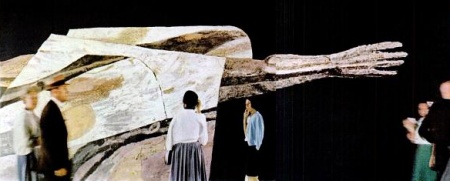 |
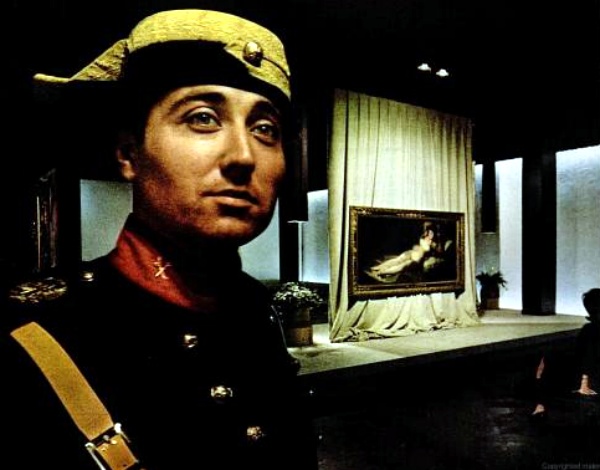
-
The simplicity of Javier Carvajal's
architecture is punctuated by a sculptured iron grille near the
entrance.
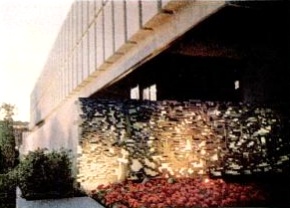 |
|
LIFE visits the Spanish Pavilion
-
THE
-
JEWEL
-
OF THE
-
FAIR
|
[Goya's Naked Maja]
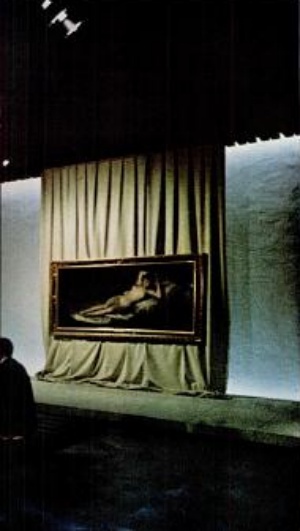 |
|
|
For its exhibit at
the New York World's Fair, Spain gambled $7 million on being
itself -- and won. Its pavilion lives up to everyone's most romantic
notion of Spain. It has the stark look and feel of hot sun and
cool shadows. Massive stairways lead past white stucco walls,
through geranium crowded courtyards to exhibition rooms where,
in pools of darkness, brilliant lights pick out Spain's art treasures
-- the paintings of Goya, Velasquez, El Greco, Miro. There are
three recent Picassos, bought for the pavilion along with murals
and sculptures by some of Spain's top young artists and a gallery
with contemporary paintings. (The first hanging was quickly bought
out and replacements hardly have time to cool on the wall before
being sold.)
- Outside the almost religious hush in the
museum alcoves, the pavilion comes noisily alive with flamenco
wails, hand-clapping, throbbing guitars and the sibilant undercurrent
of Spanish accents. In the midst of all this are three restaurants
which have run off with all the Fair's blue ribbons. The Toldeo
has an elegant haute cuisine, the more casual Granada
has a spicy Spanish menu, and the open air Taberna Marisqueria
is relaxed and redolent of sherry and olive oil.
-
-
-
Photographed for LIFE
-
by MARK KAUFFMAN
|
|
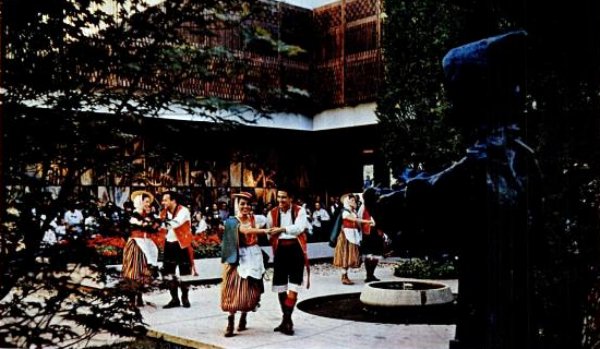
|
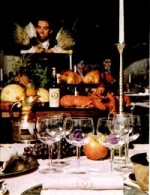
| At the Toledo restaurant -- where the
lines are long, the tariff stiff and the food Lucullan -- partridges
and several varieties of fish are flown in daily from Spain. |
|
|
| Members of the Coros y Danzas troupe perform
in the main patio 14 times a day. The rugged statue in the foreground
is of Junipero Serra, the Franciscan friar whose string of |
|
| missions established Spain's claim to California.
Along the rear wall stretches a 50-foot long stoneware relief,
Homage to Gaudi, a tribute to the turn-of-the-century
architect. |
| Spanish snacks, seafood and pitchers of
Sangria (red wine, soda, lemon and orange slices) are specialties
of the Taberna Marisqueria, a bustling patio cafe. Dancers relax
here between stints. The venenciador ladles sherry from a cask
and then spills it into your glass in a spectacular three-foot-long
arc. |
|
|
|
|
|
Source: Life
Magazine, Vol. 57 No. 6, August 7, 1964 © 1964 Time-Life
Corporation

- La Tizona, purported to be the battle
sword carried by the medieval Spanish warrior El Cid in his forays
against the Moors, is displayed in a special niche.
|
|
|
Pheasants, flamenco
and sword of El Cid
|
|
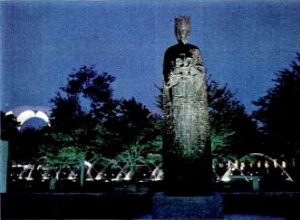
- Bronze 8-foot 10-inch sculpture of
Queen Isabella, patroness of the pavilion, stands in a patio
with the illuminated Fountains of the Fairs sparkling behind
her.
|
- Two Madonnas -- a copy in silver and
wood of the famous black-faced Virgin of Monserrat (left)
and another in terra cotta -- are bathed by glow of stained-glass
wall.
|
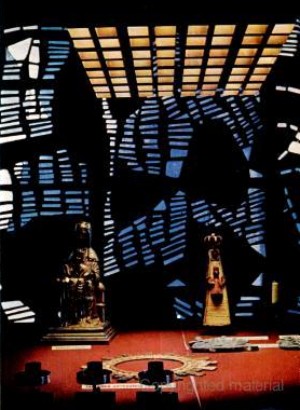 |
|
|